- Author: Kathy Keatley Garvey
As the predominantly red-and-green holiday season draws to a close, and the year crawls to an end, it's time to "bee in the pink."
Pink?
Yes, "in the pink."
Skip the red. Ignore the green. Think "in the pink."
"In the pink" means to be in top form, in peak condition, in the best of health, and that's a good resolution for the New Year. (Not to mention every day of every year.)
And, if you keep bees, let's hope your bees will be "in the pink," too. Want to learn to about beekeeping? Contact the UC Davis-based California Master Beekeeper Program.
Happy New Year!
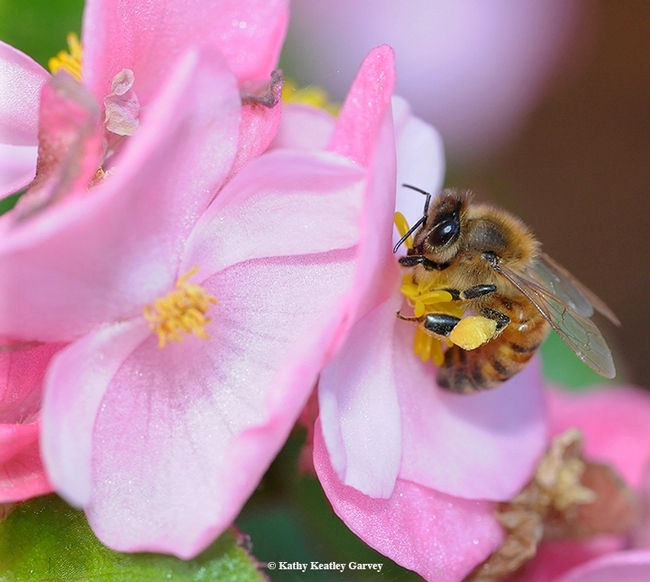
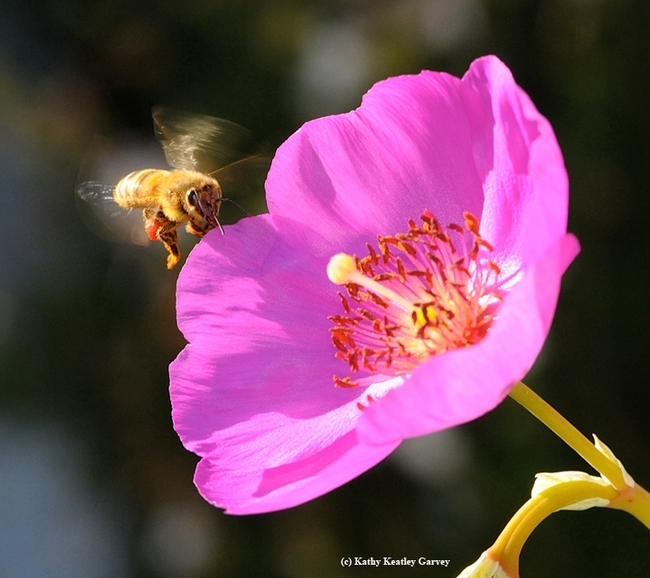
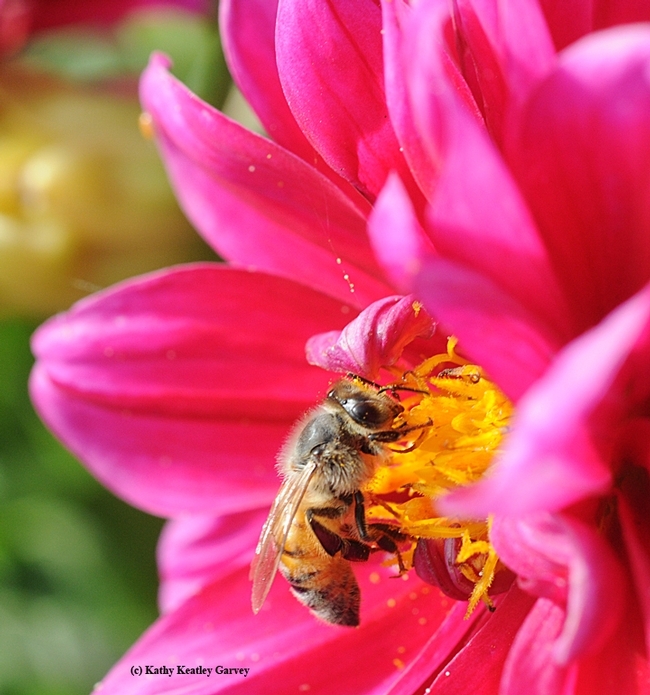
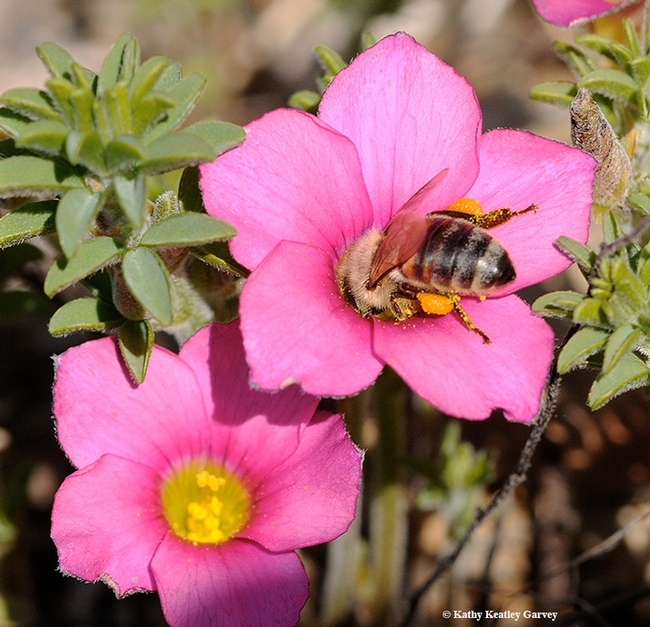
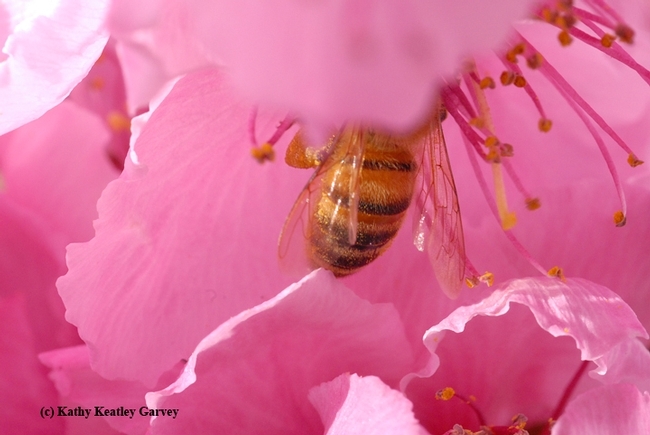
- Author: Kathy Keatley Garvey
If there's one plant in our yard that the honey bees don't like, it's the begonia.
Lavender, sage, catmint and sedum? Bring 'em on.
Sunflowers, citrus and pomegranate? Yes! Yes! Yes!
Rock purslane? Like rock candy.
Oh, how about a little begonia, Ms. Honey Bee?
Sorry, not interested.
So were we ever surprised last weekend to see a honey bee foraging on our pink begonia.
See, the begonia isn't exactly a bee friendly plant. It's not like the dearly beloved sage, lavender and catmint.
We told Extension apiculturist Eric Mussen, a noted authority on honey bees and bee behavior--and a member of the UC Davis Department of Entomology faculty--of the bee-begonia encounter. "Bet she didn't come back," he said.
"Actually, she foraged for about five minutes," I said.
I imagine, though, that when our confused little bee returned to the hive, her sisters met her at the hive entrance and said (in bee language): "You collected WHAT? You foraged in the BEGONIAS? When there was LAVENDER, SAGE AND CATMINT?"
Update: No bees have returned to the begonias.
Probably won't, either.





